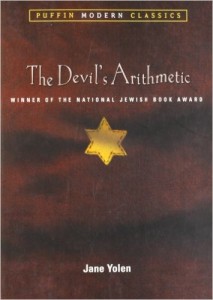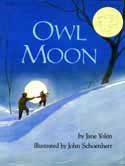 Jane Yolen has written over 300 books, won numerous awards, and been given six honorary doctorates in literature. A poet, a fairy tale teller, a writer of fiction across genres and for all ages, Jane has been called the Hans Christian Andersen of America and the Aesop of the twentieth century. Some of her best known books are the Caldecott Award winner Owl Moon, the National Jewish Book Award Winner The Devil’s Arithmetic, and the beloved How Do Dinosaurs… picture books. Jane is also well known for teaching writing to young people and adults. She honored me by writing an essay about crafting distinct voices for my book Writing Young Adult Fiction For Dummies, and today she shares insights regarding the revising process with all of us.
Jane Yolen has written over 300 books, won numerous awards, and been given six honorary doctorates in literature. A poet, a fairy tale teller, a writer of fiction across genres and for all ages, Jane has been called the Hans Christian Andersen of America and the Aesop of the twentieth century. Some of her best known books are the Caldecott Award winner Owl Moon, the National Jewish Book Award Winner The Devil’s Arithmetic, and the beloved How Do Dinosaurs… picture books. Jane is also well known for teaching writing to young people and adults. She honored me by writing an essay about crafting distinct voices for my book Writing Young Adult Fiction For Dummies, and today she shares insights regarding the revising process with all of us.
Jane’s interview follows the Rafflecopter form/entry link for today’s “Free Partial Edit by The Editor” Giveaway. Scroll down for her full interview.
As prolific as you are, will you work on multiple WIPs in a single day or do you prefer to stay in one fictional realm per day? I work on multiple things as well as on my students’ pieces/revisions. I find that such literary multitasking keeps me on my toes and keeps me from getting stale.
Would your ideal writing day begin with original drafting or with revision? Why? It all depends on 1) deadline, 2) a revision request sailing in from an editor, and 3) what else is on my plate at the time.
 For novels, how many drafts does it typically take before you feel confident about the character and story choices you made? I am not a planner and plotter, so my novels come together in the latter stages of revisions. But they feel fresher to me for that. I call it “flying into the mist.” Others call it pantser (seat of the pants) writing, which has a pejorative and hectoring tone to me.
For novels, how many drafts does it typically take before you feel confident about the character and story choices you made? I am not a planner and plotter, so my novels come together in the latter stages of revisions. But they feel fresher to me for that. I call it “flying into the mist.” Others call it pantser (seat of the pants) writing, which has a pejorative and hectoring tone to me.
 How much revising typically happens after you involve your editor? Depends on the editors. I had one who told me my novel needed nothing. And I said, every piece of writing needs something. She said, “Take out the exclamation marks.” Since I hate them in formal writing (though not to friends!!!) I went through the novel again. Made a number of small but important revisions and took out the one exclamation point. Most editors are much more hands-on.
How much revising typically happens after you involve your editor? Depends on the editors. I had one who told me my novel needed nothing. And I said, every piece of writing needs something. She said, “Take out the exclamation marks.” Since I hate them in formal writing (though not to friends!!!) I went through the novel again. Made a number of small but important revisions and took out the one exclamation point. Most editors are much more hands-on.
 Can you share an experience of having a story problem you didn’t think you could solve but eventually did? I had an historical novel called The Gift of Sarah Barker, which takes place during three days in the 1840s in a Shaker community. In the end, I thought I was going to have the young woman, Sarah, and her new husband, Abel (Shakers are not supposed to marry but be as sexless as angels), going out into the world. He was to join the Union Army and be killed. She would take their new little daughter and go—as her mother did with her—to live again with the Shakers. But when I got to the end, I loved Sarah (who was smart and sassy) and Able (who was kind and giving) too much to have that be their (un)happy ending. And while the editor loved the book, she questioned why it took place in three days. As I tried to explain it to her face-to-face in a meeting, I suddenly realized that I—as a fairy tale teller—was trying to impose the Rule of Three on a historical novel. And when I told her that, she smiled enigmatically and said, “You must trust your audience. They will reward that trust by following you wherever you go.” It ended up one of the most satisfying re-writing experiences I have ever had in a novel AND simply made the book work.
Can you share an experience of having a story problem you didn’t think you could solve but eventually did? I had an historical novel called The Gift of Sarah Barker, which takes place during three days in the 1840s in a Shaker community. In the end, I thought I was going to have the young woman, Sarah, and her new husband, Abel (Shakers are not supposed to marry but be as sexless as angels), going out into the world. He was to join the Union Army and be killed. She would take their new little daughter and go—as her mother did with her—to live again with the Shakers. But when I got to the end, I loved Sarah (who was smart and sassy) and Able (who was kind and giving) too much to have that be their (un)happy ending. And while the editor loved the book, she questioned why it took place in three days. As I tried to explain it to her face-to-face in a meeting, I suddenly realized that I—as a fairy tale teller—was trying to impose the Rule of Three on a historical novel. And when I told her that, she smiled enigmatically and said, “You must trust your audience. They will reward that trust by following you wherever you go.” It ended up one of the most satisfying re-writing experiences I have ever had in a novel AND simply made the book work.
 You’ve said, “If I ever write the perfect book, I’ll stop writing.” With perfection off the table, how do you know when you’re looking at your best and final draft? Geeze—I wish I had someone who could tell me that! Sometimes an editor simply takes it out of my hands.
You’ve said, “If I ever write the perfect book, I’ll stop writing.” With perfection off the table, how do you know when you’re looking at your best and final draft? Geeze—I wish I had someone who could tell me that! Sometimes an editor simply takes it out of my hands.
Thank you, Jane!
You can follow Jane on Facebook and Twitter @JaneYolen.


Love to see that no matter how prolific you are, you still need to follow the writing process that works for you.
So interesting – thanks for the interview!
It’s always reassuring to hear other writers talk about similar methods or approaches to writing. Thanks to Jane for sharing!
Finally had a chance to read today’s post, and so glad I did. Jane, you’re one of my (and my children’s) favorite authors. “Flying into the mist” is one of my favorite ways to write, and I am grateful to have a more poetic term for it than “pantser” (which my autocorrect feature wants to spell “panther”–another intriguing alternative).
It’s reassuring to hear that it’s ok to tackle more than one project in a day. And I’m both surprised and grateful to learn that Jane is not a plotter.
Excellent! Thank you for this.
“Flying into the mist” – I like that!
This is s great interview. Thanks!
I know the Rule of Three from medieval times as a way to estimate things. What’s the Rule of Three for fairy tales? What a fascinating interview. This is an encouraging quote: “literary multitasking keeps me on my toes and keeps me from getting stale.” Thanks for this interview!
Thanks for another interesting interview. Loved this serries! I shall now and forever be ‘flying into the mist’ when I write. Even saying it makes me want to write! 🙂 I, too, am curious about The Rule of Three.